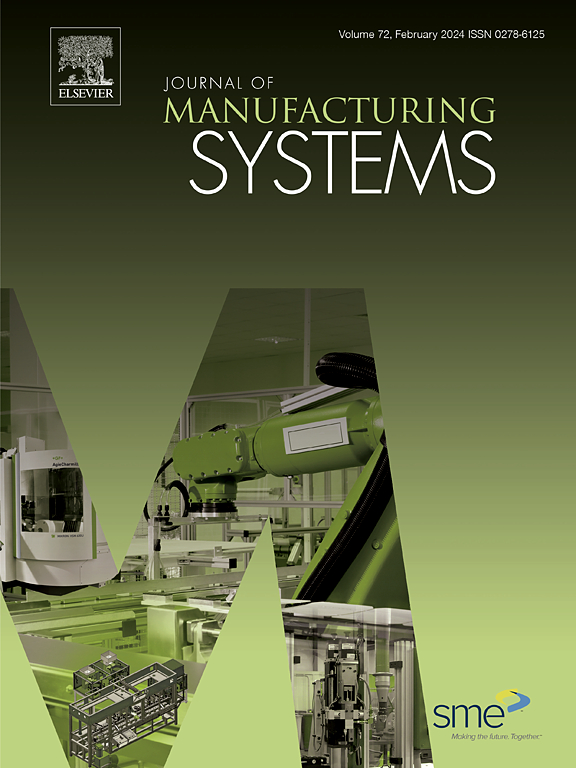A digital twin calibration for an automated material handling system in a semiconductor fab
IF 12.2
1区 工程技术
Q1 ENGINEERING, INDUSTRIAL
引用次数: 0
Abstract
To address the complex, dynamic, and stochastic nature of an automated material handling system (AMHS) in a semiconductor fabrication facility (fab), practitioners have used a high-fidelity discrete-event simulation as its digital twin model for decision-making over several decades. Previous studies have focused on fast digital twin-based decision-making in AMHSs under the assumption that their digital twin models are credible enough to prescribe decisions. However, parameter uncertainty and intrinsic bias in an AMHS digital twin model can lead to an inaccurate representation of its field system. To address the challenge, this paper introduces the Bayesian calibration, which modularly estimates a digital twin outcome and its discrepancy using Gaussian process priors. A calibration framework for digital twin-based decision-making is also presented using an AMHS example. Our experimental results with various AMHS operating scenarios demonstrate that: (1) a sophisticated digital twin calibration is necessary, especially when AMHSs operate under heavy-workload scenarios; and (2) exploring model bias considerably decreases the prediction error of an AMHS digital twin within a limited number of field observations. Moreover, we discuss the applicability of the approach to digital twins in various fields.
半导体晶圆厂自动化物料搬运系统的数字孪生校准
为了解决半导体制造设施(fab)中自动化物料处理系统(AMHS)的复杂性、动态和随机性,几十年来,从业者使用高保真度离散事件模拟作为其决策的数字孪生模型。以前的研究主要集中在amhs中基于数字双胞胎的快速决策,假设他们的数字双胞胎模型足够可信,可以规定决策。然而,AMHS数字孪生模型中的参数不确定性和固有偏差会导致其现场系统的不准确表示。为了解决这一挑战,本文引入了贝叶斯校准方法,该方法使用高斯过程先验对数字孪生结果及其差异进行模块化估计。以AMHS为例,提出了一种基于数字孪生的决策校准框架。我们在各种AMHS运行场景下的实验结果表明:(1)复杂的数字孪生校准是必要的,特别是当AMHS在高工作量场景下运行时;(2)探索模型偏差大大降低了AMHS数字孪生在有限数量的野外观测中的预测误差。此外,我们还讨论了该方法在各个领域对数字孪生的适用性。
本文章由计算机程序翻译,如有差异,请以英文原文为准。
求助全文
约1分钟内获得全文
求助全文
来源期刊

Journal of Manufacturing Systems
工程技术-工程:工业
CiteScore
23.30
自引率
13.20%
发文量
216
审稿时长
25 days
期刊介绍:
The Journal of Manufacturing Systems is dedicated to showcasing cutting-edge fundamental and applied research in manufacturing at the systems level. Encompassing products, equipment, people, information, control, and support functions, manufacturing systems play a pivotal role in the economical and competitive development, production, delivery, and total lifecycle of products, meeting market and societal needs.
With a commitment to publishing archival scholarly literature, the journal strives to advance the state of the art in manufacturing systems and foster innovation in crafting efficient, robust, and sustainable manufacturing systems. The focus extends from equipment-level considerations to the broader scope of the extended enterprise. The Journal welcomes research addressing challenges across various scales, including nano, micro, and macro-scale manufacturing, and spanning diverse sectors such as aerospace, automotive, energy, and medical device manufacturing.
 求助内容:
求助内容: 应助结果提醒方式:
应助结果提醒方式:


